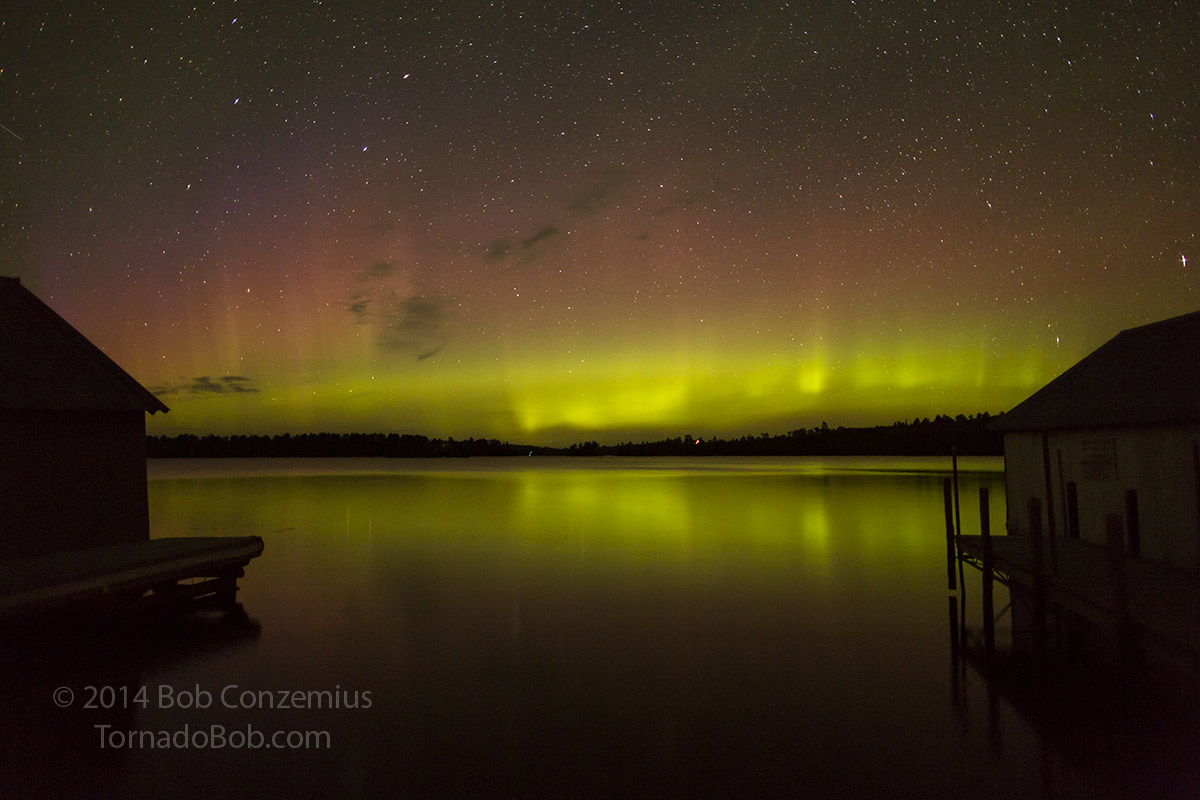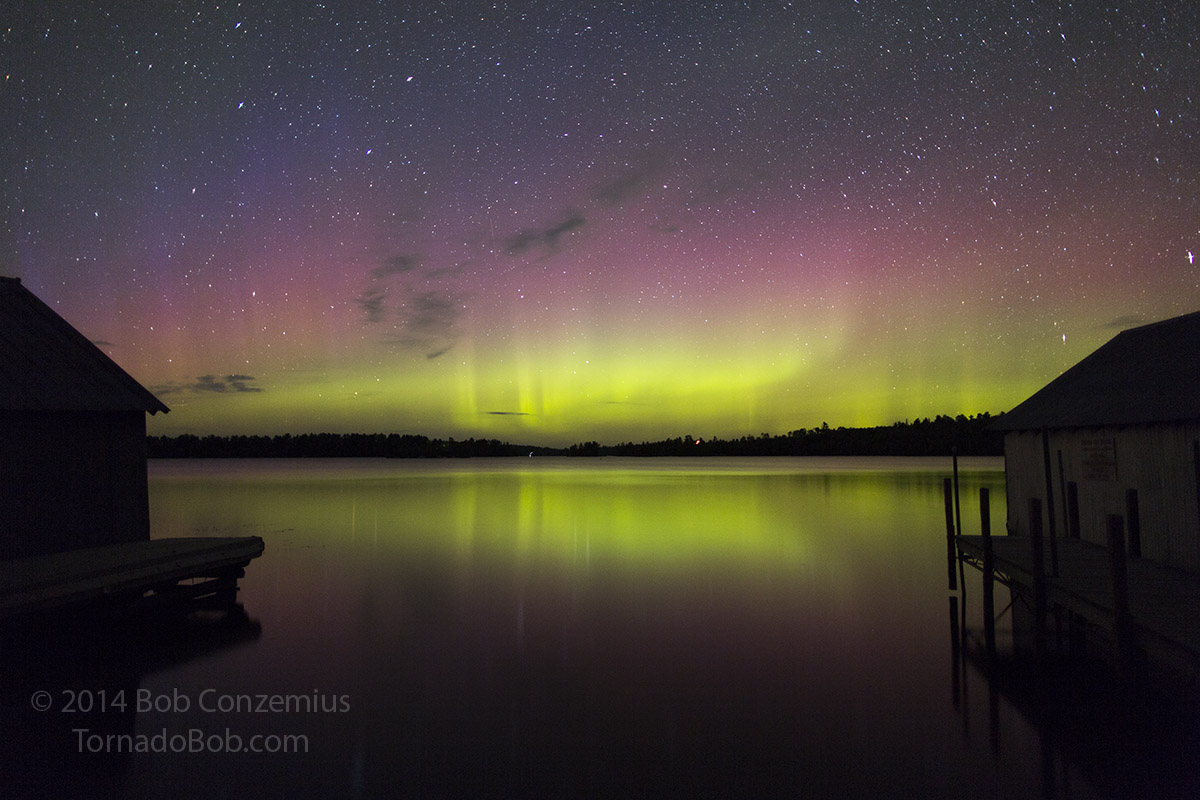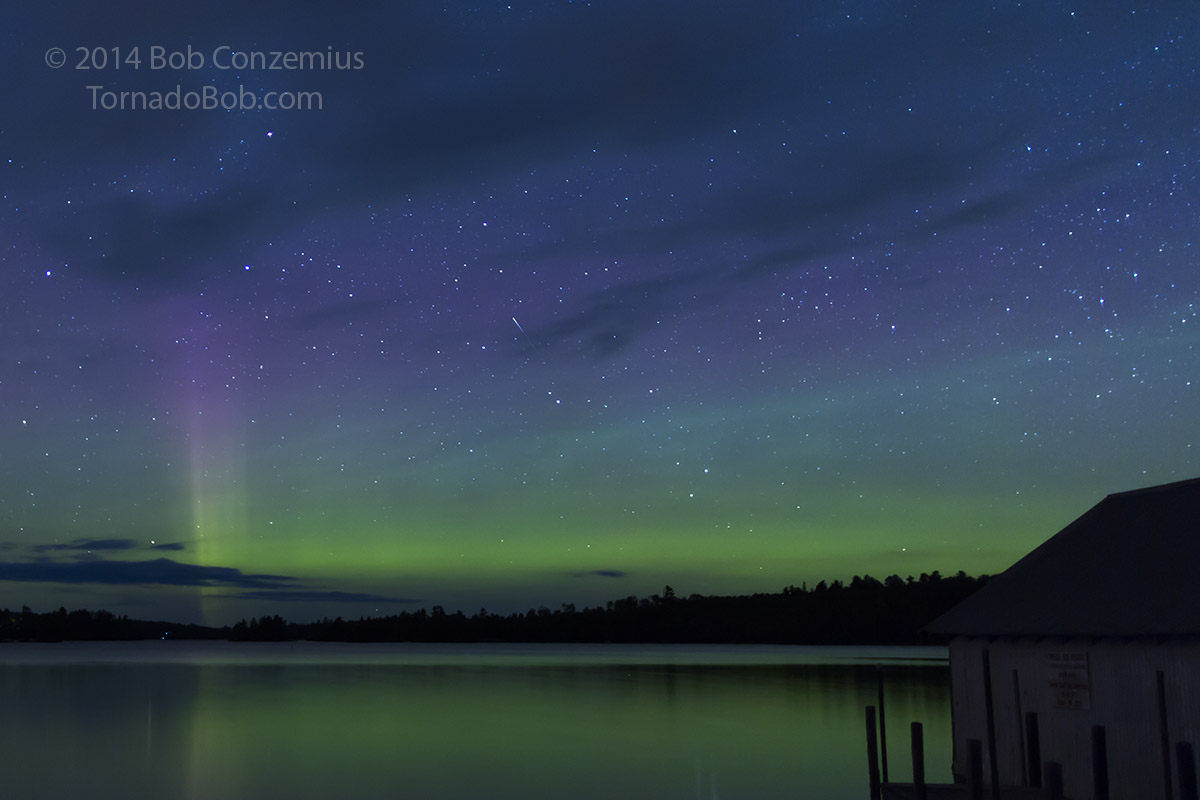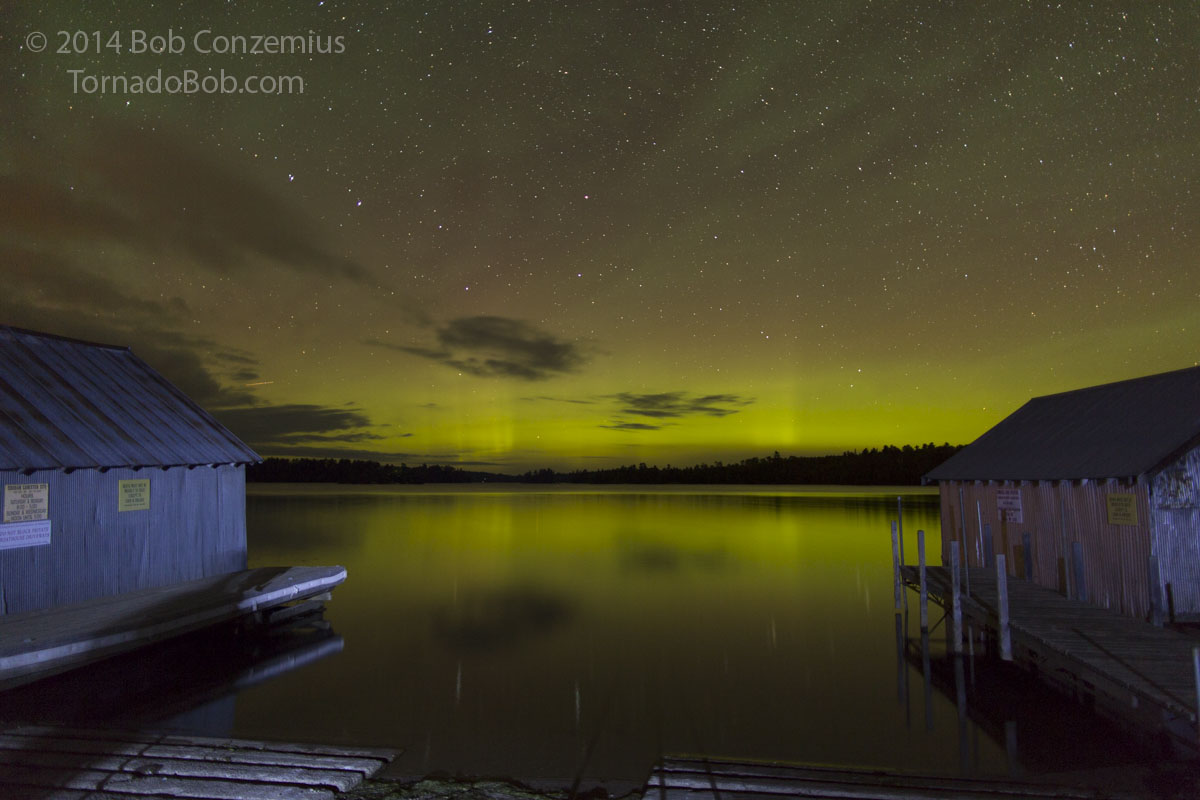August 21 Auroras
Lake Vermilion (MN)
This was the third night in a row with impacts from a CME that moved past earth in the very early morning hours of August 19. The initial CME impact sent Bz pointing a bit south, but northern Minnesota had cloudy skies, and the show probably would not have been very dramatic anyway. During the day on August 19, the magnetic field fluctuated a bit but then pointed quite a bit south to -15 nT. However, by evening, the vector rotated pretty strongly north, increasing to near 20 nT, all but shutting out any chances of auroras.
During the day on the 20th, the field pointed modestly south again, reaching the -5 to -6 nT range and staying there for quite a few hours. This persisted into the evening and then into the early hours of August 21. It looked like that was good enough for auroras, and there were just enough clear skies and a waning moon so that I decided to go out and shoot. I wanted to meet up with Heidi Pinkerton of Root River Photography to discuss some other aurora photography items, so I decided to head northeast to Lake Vermilion. Along the way, I remarked how little opportunity there was too shoot auroras between Grand Rapids and Tower. Highway 169 goes along the Iron Range, and there are lots of small towns, a bit of traffic, and a ridge to the north that all make it difficult to see the auroras when you're inside the car (unless they are bright). In fact, a friend of mine who was shooting from his front yard in Duluth was getting them on his camera, and there's a lot of light pollution in Duluth.
I drove east from Tower, over the ridge in Soudan, and down to Stuntz Bay. (Holy Cow, there was an incredible number of bats flying around on this road!). As soon as I parked, I noted a nice auroral oval to my north. Why hadn't I noticed it during my drive over the past 1.5 hours? Maybe it had just started to brighten. Sure enough, as soon as I got out of the car, a small substorm started, and I set up the camera as quickly as I could. This is the first picture I took.
 |
|---|
| A small substorm starts on Lake Vermilion. |
I decided to try for a lower noise picture, thinking this wasn't a night for time lapses anyway. I went to ISO 800 and took some 20-second exposures. Normally, I use a color temperature of 5200 K for my white balance, but I decided to play with some cooler colors. I had taken an iPhone picture of the LCD screen of my camera and posted it on Facebook, and it ended up being so popular that I wanted to reproduce the colors on that image. Here is the best match I could get.
 |
|---|
| 24 mm, ISO 800, 20 seconds, f1.4, cooler color temperature. |
With that, the auroras quickly faded to a flat green glow on the horizon. That we got any substorm at all was somewhat interesting because there was only slow variation in the solar wind and its magnetic field, although I guess that's the normal evolution of auroras during any given night anyway. Much of the time, the oval is fairly flat without discernable structure. Tonight was no exception. I continued to take a few images and decided to play around with cropping and and even cooler color temperature. This really made the sky look blue.
 |
|---|
| 24 mm, ISO 800, 20 seconds, f1.4, much cooler color temperature, in an attempt to get the sky to turn blue. |
The final shots of the night were taken with the assistance of a little light painting. I stood far back and pointed the flashlight steadily towards a point below the North Star so that the peripheral light was illuminate the boat houses. It worked reasonably well!
 |
|---|
| Final shots, light-painting the boat houses. |
With that, we called it a night. The end of shooting would have come soon anyway. As soon as I drove southwest back towards home, I ran into low clouds and fog. This lasted a majority of the way back home.